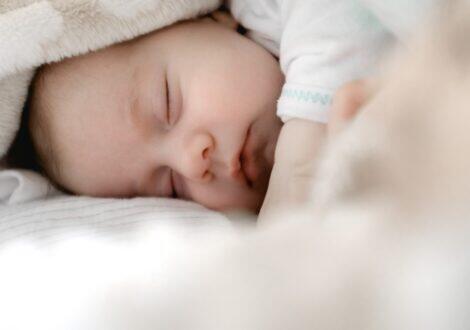The European Union Directive of 2019 on work life balance was adopted on 29 June 2021, which amongst other things provides for 9 weeks of earmarked parental leave. The work life balance Directive must be implemented in the individual member states no later than 2 August 2022. On 26 October 2021 the Government, together with a broad majority of the political parties, entered into an agreement on the implementation of the directive into national law.
The parties have entered into the agreement to create more equality between men and women in the labor market and in the family by encouraging greater equality of leave between parents, and by fathers being granted earmarked leave.
The agreement means that from August 2022, there will be an equal distribution of leave between mothers and fathers. As a general starting point, both mother and father will each receive 24 weeks’ leave after the child’s birth (24/24 model). The mother will continue to be entitled to four weeks’ maternity leave prior to the birth of the child.
Out of the 24 weeks’ leave, two weeks’ leave is earmarked for each of the parents, which as before, must be taken in connection with the birth, in addition, another 9 weeks’ leave is earmarked for each of the parents. The earmarking of leave means that the leave cannot be transferred between the parents, and that the leave is therefore lost if the parent to whom the leave is earmarked does not take it. The earmarked parental leave must be taken within the child’s first year of life.
However, in relation to the weeks that are not earmarked, parents can choose to transfer the leave to each other. Thus, a total of 13 weeks’ leave can be transferred from one parent to another.
The agreement only covers parental leave for employees, and therefore the self-employed, unemployed or students will not benefit from the same provisions. This means that the self-employed, unemployed or students can transfer 22 weeks’ leave to the other parent.
Entitlement to maternity allowance
The agreement does not change the length of the total right to leave with maternity benefit, a total of 52 weeks, of which 48 weeks is taken after the birth.
Salary during leave
The agreement does not change the employees’ right to pay during leave. Section 7 of the Salaried Employees Act gives female employees covered by the Salaried Employees Act the right to half pay for 4 weeks before the expected birth (term) and 14 weeks after the birth. The Salaried Employees Act, however, does not contain rules on the right of male employees to pay in connection with the birth of a child.
In addition, the right to pay during leave will depend on a collective agreement or the company’s maternity policy.
Single parents
According to the agreement, single parent families should not be disadvantaged compared to two parent families in relation to the total right to maternity / paternity leave, and thus they do not lose leave weeks with the right to maternity / paternity pay because of the Leave Directive and the 24/24 model.
Special Family Relationships
The agreement, will in special situations, make it possible to allocate the resident parent extra weeks of maternity benefit, if several objective conditions are met, in order to compensate for the weeks that are earmarked for the other parent. These can be situations such as high-conflict divorces or if one parent is an employee but suffers from a severe disability, which means that he or she cannot take leave with the child. In addition, it must be possible to postpone his 9 weeks of earmarked parental leave until after the child’s first year of life, in those situations where the employee has an obstacle to leave. This may, for example, be due to a pending case of paternity or custody and deportation for the Danish state.
Self-employed and unemployed
Regardless of whether the parents are self-employed or unemployed, they are generally given 24 weeks’ leave after the birth. However, the requirement for nine weeks of earmarked leave only applies to employees, and therefore the self-employed and unemployed can choose to transfer up to 22 weeks (9 + 13 weeks) to the other parent.
Social parents
The agreement introduces the concept of “social parents”, creating the opportunity for greater flexibility for LGBT+ families. The parties to the agreement agree that a child’s legal parents must be able to transfer their transferable weeks and leave rights to so – called social parents, which include the legal parent’s spouse, the legal parent’s cohabitant, a known donor and the known donor’s spouse or cohabitant with a parent-like relationship with the child.
Care leave
The political agreement states that all employees have the right to absence to provide personal care or support to a family member, or a person living in the same household as the employee, who needs care or support due to health reasons. The right to absence is for five working days per. calendar year without benefit.
Scope of the Leave Directive
The agreement also states that the parties to the agreement are critical of the EU Commission’s assessment of the scope of the Leave Directive. Therefore, the government will initiate a dialogue with the EU Commission to discuss the consequences of the EU Commission’s legal interpretation of the scope of the directive, and the consequences that the directive may have when it is implemented on a welfare system such as the Danish one.
The government expects to present the bill in December 2021.
The political agreement on earmarked maternity leave can be read in full here (in Danish): https://bm.dk/media/18884/politisk-aftale-om-oeremaerket-orlov.pdf
This article was first published by Mette Klingsten Law Firm on 2 November 2021. Interested in knowing more about our Danish member and how it can assist you with parental leave related questions? Get in touch here or visit Mette Klingsten Law Firm’s website.
